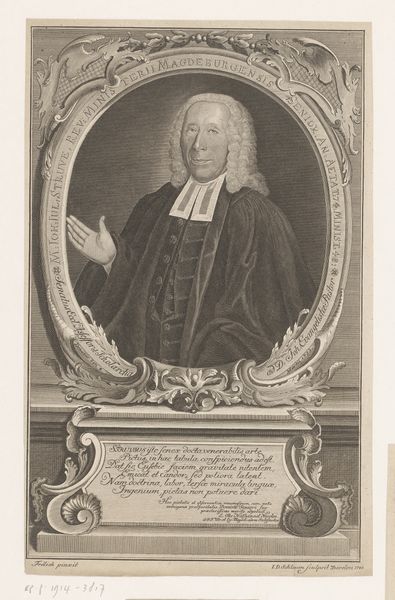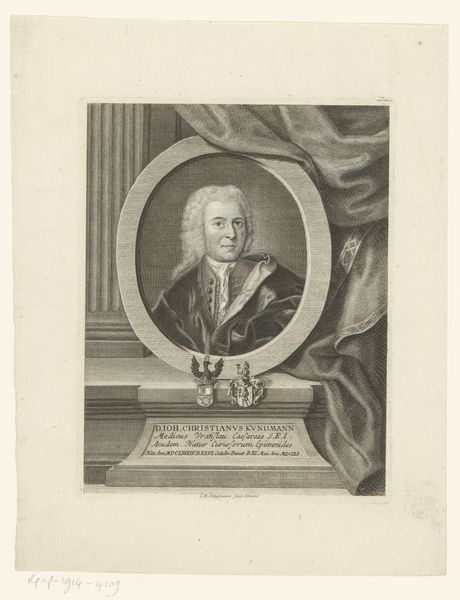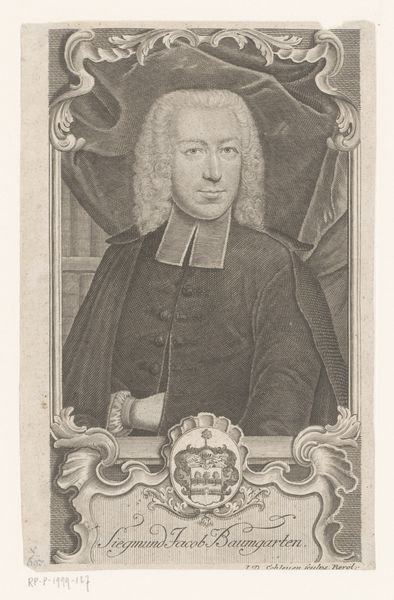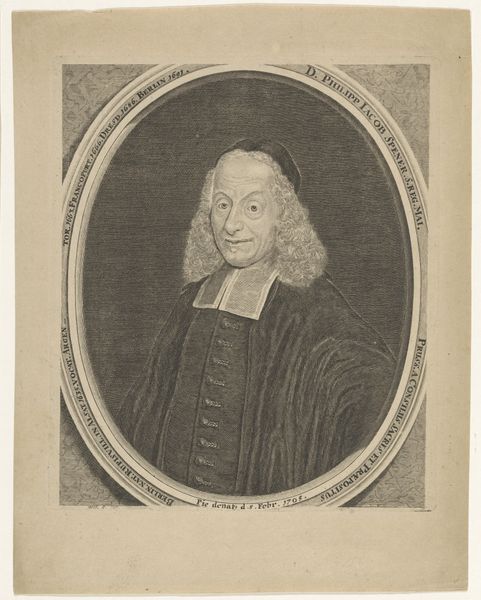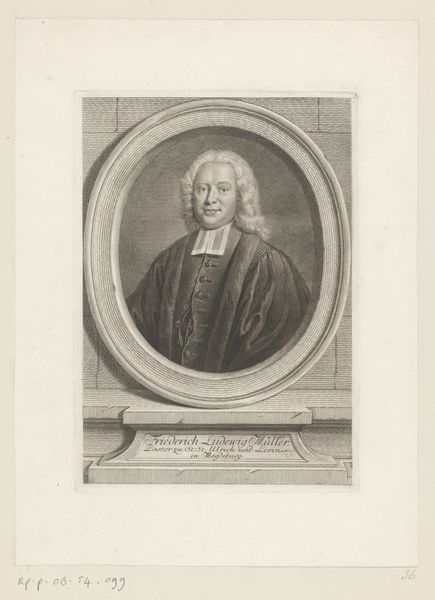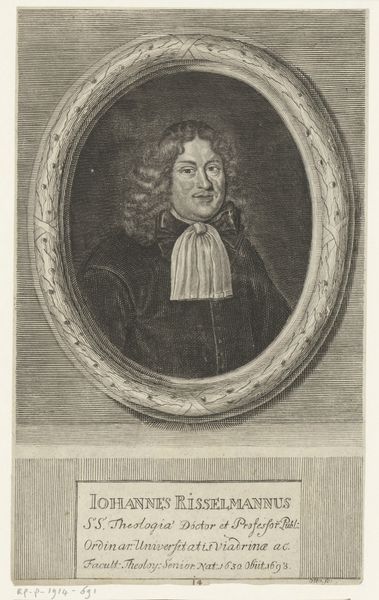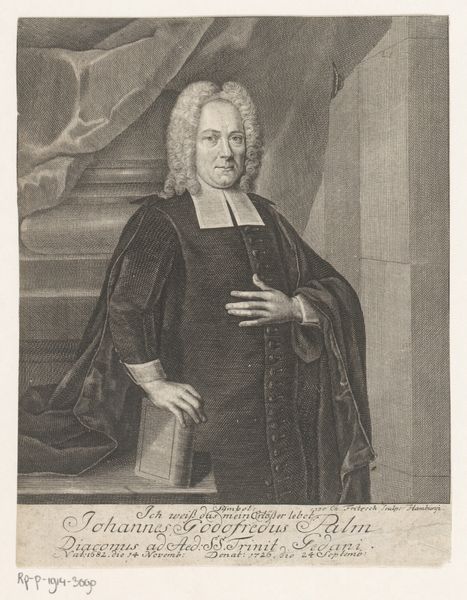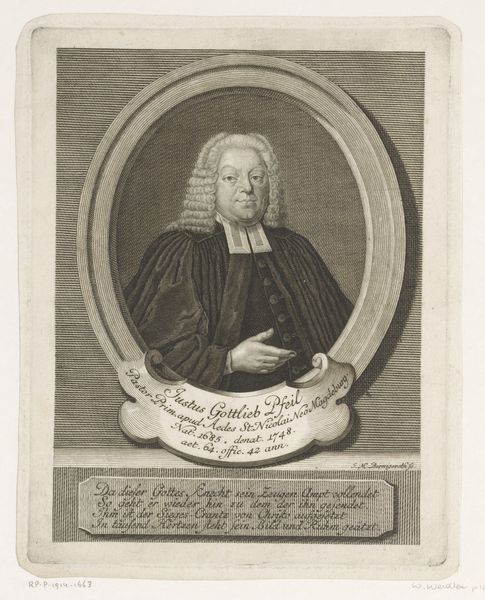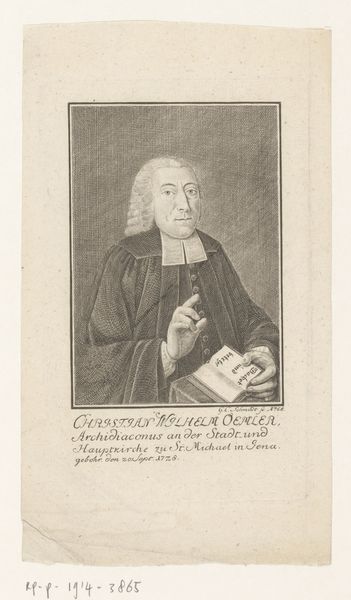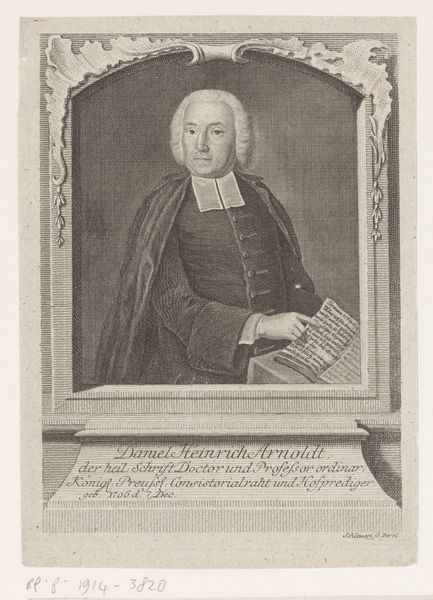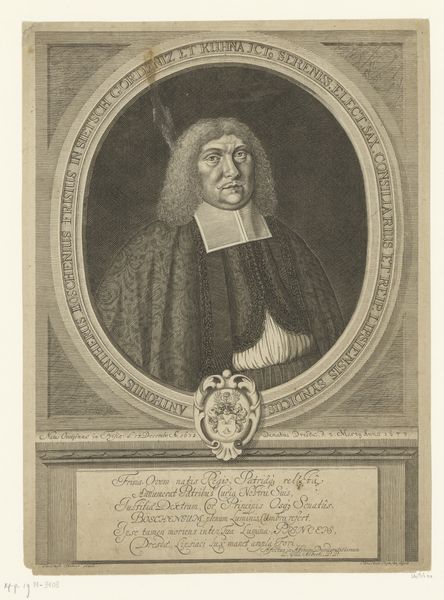
engraving
#
portrait
#
baroque
#
old engraving style
#
engraving
Dimensions: height 261 mm, width 170 mm
Copyright: Rijks Museum: Open Domain
Editor: Here we have Johann Wilhelm Stör's "Portret van Paul Christian Hilscher," made in 1732. It's an engraving. It’s interesting to see this older printmaking style… almost like a photograph made of lines. What are your thoughts on it? Curator: Consider the social context that births this work. It’s an engraving, which means a plate, likely copper, meticulously worked by hand to reproduce this image many times over. We see Hilscher, but we must also consider the artisan who labored to create these multiples. Each line speaks to the craft involved and the dissemination of knowledge and power facilitated by printed images. Editor: So you're less focused on Hilscher himself and more on the… printing process? Curator: Precisely. The act of reproducing this image connects to ideas around labor and consumption. Engravings made art more accessible, turning image consumption into something approaching a popular phenomenon. Who were the consumers of these prints? What role did images like these play in the spread of social status and political ideology? Editor: It’s interesting to think of this piece not as a unique artwork but as one of many. That certainly changes its context. The work feels very… permanent, now that you mention consumption, though. Curator: Does the notion of ‘permanence’ perhaps belie the disposability of the image within society? Was the act of creating and distributing more prints related to material and cultural value than to ideas around immortalization? Editor: So instead of eternalizing Hilscher, it could have been about sharing his image and status. It opens a whole other area of thinking, the distribution of power through representation. Thanks! Curator: Exactly! Paying attention to how it was made offers fresh ideas to ponder.
Comments
No comments
Be the first to comment and join the conversation on the ultimate creative platform.

